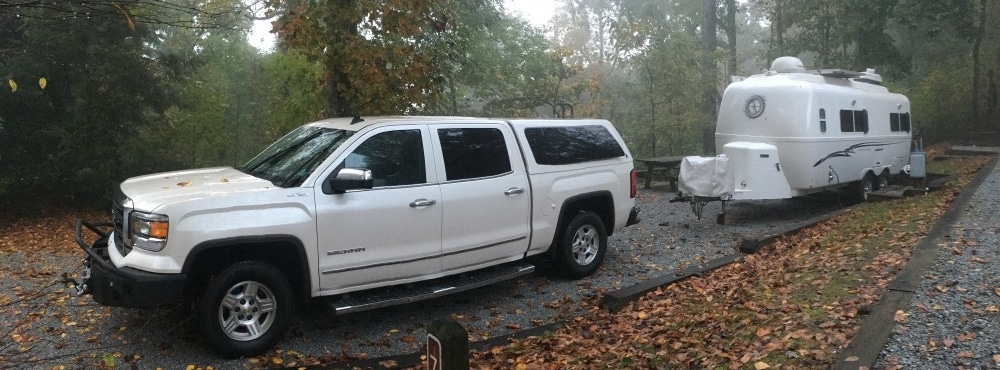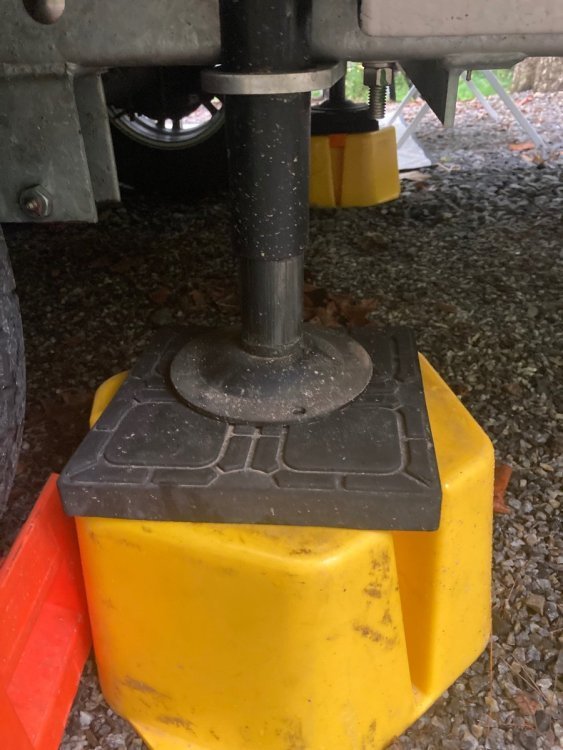-
Posts
3,240 -
Joined
-
Last visited
-
Days Won
167
Everything posted by ScubaRx
-
Very well stated, Frank.
-
I'm glad you joined our forum. My gut feeling is that everyone has something to share, maybe they just don't realize their knowledge is useful and would be of help to somebody. Welcome from Hull #050.
-
A quick internet search on the specs places it somewhere just below the capabilities of a newer model 1/2 ton pickup and way ahead of a '92 Ford Ranger.
-

No 120 vac from outlets in Elite II.
ScubaRx replied to docron's topic in Mechanical & Technical Tips
Since you did not fill in the information about your trailer, it would be really helpful if you told us which model trailer you have, what year it is, what kind of batteries, solar?, generator? Without much info to go on, I'm confused. You're camping with no hookups but somehow expected there to be 120 volts available from your outlets? You state that the microwave and A/C will run. The only place they can get power (in your situation) is from the batteries, through the inverter and only if your trailer has the Lithium battery package. Further you state that you "Called Oliver service and [they] would not help me, no tech support for anything 120v." This does not sound right. Who did you talk to? -
For your Elite I, you don't need a "big truck". I would highly recommend a Mid Sized Pickup like the GMC Canyon or the Chevy Colorado with the 2.7L I-4 Turbo DOHC VVT DI with Active Fuel Management engine. This engine is standard in the GMC and the high end option the Colorado. https://pickuptrucktalk.com/2023/05/2023-gmc-canyon-vs-chevy-colorado-spec-by-spec-comparison/ There are some owners that use this small truck (or its diesel predecessor) to tow the larger Elite II. All report success towing the 2000+ pound heavier trailer. But, that "success" is dependent on what your expectations are of a good towing experience. To me, it's being able to carry anything I desire and still be able to power up a 12,000 foot pass at the legal speed limit and coast down the other side never having to touch the brakes, using only the exhaust brake and downshifting. This is easy East of the Mississippi River where the highest point you can drive to is 6400 feet. Compare that to the highest paved road in North America, Mount Evans Road in Colorado that rises to a height of 14,130 feet. Since you hail from Montana, I'm sure you're all too familiar with navigating the western highways. We've owned 5 different tow vehicles including a 1500, 2500 and now a 3500. I've towed with all of them - a lot. For me, I could have my choice as we own both a GMC Canyon with the 2.8L diesel and a Silverado 3500HD 6.6L diesel but anything smaller than our 3500 is too small for our Elite II. We get better towing fuel mileage with it than with any of the others.
-
-
Most of us leave the stinky slinky permanently attached to the drain pipe. It sounds like your gray water cable needs to be adjusted.
-
When I ordered our Silverado 3500, I also ordered the trailer tire sensors and the rear camera that goes on the rear of the trailer. They were delivered with the truck from the factory. If you have a tire problem with one of the truck or trailer tires, it will pop up on your DIC. You do not have to actively monitor a separate screen to check the tires. It's all integrated into the truck.
-
The LP connections are not free. The Original Owner apparently didn't want/need them.
-
I've had a front hitch on every one of the five tow vehicles we've owned and I've been preaching this sermon for years. Maybe folks will listen to you.
-

Shower not draining
ScubaRx replied to LindaShields's topic in Welcome To The Oliver Travel Trailer Forums
And you won't have to do it again for him. -
I agree. Matt and I talked at the rally about putting some restrictions in place concerning non members, as well as members who never post.
-
Symmetrical Numbers, that would be a palindromic number... Like Hull #050
-
Be careful there, Art. According to HH's Code of conduct, you are not allowed to cook outside. Code of Conduct While each Host has its page detailing where to park and what they expect from you, Harvest Host has a Code of Conduct that you must follow. It is mandatory to have a self-contained RV with a water tank, an indoor kitchen, and a toilet. You cannot cook outside or use a tent. You may also have to show proof of liability insurance, so make sure you have it handy.
-
I added two motorized valves to the water lines going to the outside shower. I also added an air line to each water line with check valves (to prevent water from back-flowing into the air lines) to facilitate blowing the lines clear for winterization. The air line runs to the front of the trailer to a quick connect. I can use either the compressor system in the Silverado or a compressor at home. I also re-built the outside shower and dump valve box. Here is one of the motorized valves with the air connection prior to installation. Here's a look at the control station mounted in the basement.
-
The furnace will heat below deck. You can enhance that by opening some forward hatches to get warm are from the coach into areas that are further from the furnace.
-
I admit that I have no direct knowledge of how much that particular line would drain under the circumstances you describe. Compressed air will quickly displace water pushing it the line if the air has an escape route. I've found the best method of evacuating water for the plumbing is to use the on/off method. I usually use about 40 pounds of air pressure. Apply pressure to the lines with all taps open. At first, a good bit of water will flow out. When it has reduced itself to a sputtering gurgle, cut it off and wait a few minutes. This will allow the residual water to run to the low spots and pool. Turn the air back on, water will come out the second time but not nearly as much. Repeat this several times until you've gotten the bulk of the water out. I doubt you could ever get it all out but that's OK. In the case of a closed end line (as with the composting toilet) I believe it would drain out just fine, but if I were worried about it, I would replace the cap with a valve that I could open during the blowing out process and then close again. If you wait until the last stages of the above process, you'll only have a small amount of water from the valve that you have to deal with.
-
I "borrowed" this pic from @Hokieman post above. This is a great example of what I've been preaching for the last 15 years on how the jacks ought to be used. As you see he has only barely extended the jack foot. This makes for a very stable resting platform since there is virtually no flex from the extended leg of the jack. Further, when you forget to raise one of the jacks as you are leaving camp you will not ruin the jack by bending the still extended, all the way to the ground, jack foot. Rather the jack will drive off the block and exactly no damage will occur. Hopefully you will feel it, if not you may leave your blocks behind but they're a lot cheaper than replacing the jack. If this tragedy ever happens to you, know that you will have to cut off all of the inner jack tube that is sticking out. Without a reciprocating saw with a good metal blade or a hacksaw and a lot of arm moxie you may be stuck for a while. You can't just drive away dragging the bent jack. Great Job!!!
-

My how-to video for cleaning the weep holes and tracks
ScubaRx replied to Wayfinder's topic in Mechanical & Technical Tips
Her trailer is a 2017. -
That's a good bit of weight added behind the axles. Too much trailer weight behind the axles will lead to fishtailing and could lead to an accident. At the very least, he has altered the balance of the trailer and is reducing the tongue weight, another factor that could lead to decreased trailer control. I hope he's got a big truck pulling it. If so, he'll probably be OK. That said, "HOPE" is not a strategy.
-
If I'd known there was going to be math involved, I would not have signed up.
-
As we don’t consume alcohol, HH has never been a draw for us. Yes, I know they’re not all alcohol related, but with having to pay to be a member, being expected to buy something before you leave seems to be awfully expensive for what you get in return.









